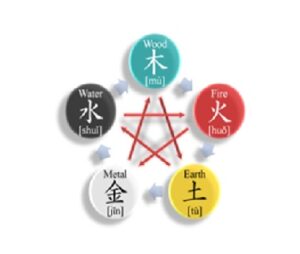Autumn from the lens of Chinese Medicine

The ancient Chinese believed that the seasons and the associated changes in climate had a significant effect on human beings. The acknowledgment of the inevitable rhythmic changes of the year is still a part of Chinese philosophy and the patterns of the season are utilized to influence one’s lifestyle to live more harmoniously with nature. The foundation of Chinese Medicine is the Yin-Yang Theory, which reminds us of the importance of balance in all aspects of life. Wisdom from Chinese Medicine informs us of small changes we can make in the food we eat, the clothes we wear and how to mentally approach the rhythm of the season, to live in greater balance and harmony with our surroundings.
In Chinese Medicine the seasons are associated with one of the Five Elements, another foundational theory of Chinese Medicine. The Five Elements include Water, Fire, Wood, Metal and Earth. Famous author, Giovanni Maciocia, says “the Five Elements are used to represent the basic processes, qualities, and phases of a cycle.” Each element is used to construct a representation of the observed patterns and associations for many different phenomena – from the seasons and climate to organs, emotions, tastes, colors etc.
The season of Autumn is housed by the Metal element. The Metal element also has the climate of dryness and the organs associated are Lungs and Large Intestine. Autumn is a time of getting ready for the winter ahead. During this time, everything in nature contracts and moves inward and downward – the leaves and fruit fall and the sap of the trees travels down into its roots. It is a slower and quieter time – an opportunity to shed things or activities we don’t need, to live simpler. Lungs are the organ most affected by grief and sadness. Autumn provides an atmosphere to acknowledge unresolved grief or sadness and an opportunity to move through and process it. This awareness can be particularly helpful for folks who may need more immune system support or have a condition that affects the lungs. Remember, there is no shame in seeking outside help to assist in the processing and healing of difficult experiences or trauma.
The awareness that dryness is the climate in Autumn provides an opportunity to find ways to nourish our Lungs, which may struggle if already imbalanced and exposed to dryness for long periods of time. This is the season to be cautious of the amount of time spent in either air conditioning or central heating which may exacerbate a symptom such as a dry cough or dry skin. The clothes we wear have a health impact as well. Autumn is a time to wear scarves to protect your neck from the cold and perhaps a hat to help conserve heat during the chilly dry days.
One important consideration, for staying healthy during the season, is to make modifications to the types of foods consumed and how they are prepared. Autumn through Winter are times for baking and consuming warm foods like soups and stews. Food recommendations based on Chinese Medicine principles is quite complex and highly individualized. Some basic considerations include focusing on the pungent/spicy/umami taste. Per Paul Pitchford’s book, Healing with Whole Foods, “some mildly pungent and energetically warming foods include oats, rice, millet, corn, carrots, leeks, radishes, cauliflower, beef and lamb.” If you start to feel a cold coming on (without a fever), incorporating more ginger, garlic and scallions can ‘pack a punch’ to help you recover quicker as these foods are very warming. Paul would also recommend avoiding raw foods during this time because of their cooling nature on the body. Supporting the center by means of consuming warming foods can help you stay in balance during a time of year when cold predominates in the environment.
Chinese medicine in addition to Naturopathic considerations can help you move through this Fall to Winter transition with greater ease and vitality. Exciting news! Yellowstone Naturopathic Clinic is once again offering acupuncture through one of our new residents, Dr. Craw.

Clinic